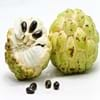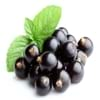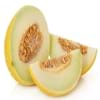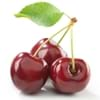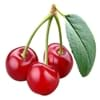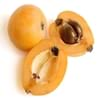Health Benefits
Cancer prevention, Heart care, Regulation of heart rate
Arthritis prevention, Cancer prevention, Gout treatment, Heart care
General Benefits
Anti oxidant properties, Anti-inflammatory properties, Boosts immune system, Controls blood pressure, Digestive aid, Strengthens bones
Anti-inflammatory properties, Boosts immune system, Controls blood pressure, Controls blood sugar levels, Cures fever, Digestive aid, Sore throat treatment
Skin Benefits
Reduces wrinkles, Skin rejuvenation
Reduces wrinkles, Treatment of acne
Hair Benefits
Promotes longer and healthier hair, Treatment of dandruff, Treatment of Lice
Promotes longer and healthier hair, Shiny hair
Allergy Symptoms
Anaphylaxis, Itching, Skin rash, Swelling of face
Anaphylaxis, Digestive Problems, Itching, Skin Rashes, Swelling
Side Effects
Allergic reaction, Possibly unsafe during pregnancy
Allergic reaction
Best Time to Eat
As a snack in the late afternoon, Don't consume at night and before bed, Morning time (before lunch)
As a snack in the late afternoon, Don't consume at night and before bed, Eat the fresh ones, avoid mixing with any other foods, don't eat after meal., Morning time (before lunch)
Vitamin A (Retinol)
Not Available
Vitamin B5 (Pantothenic Acid)
Vitamin C (Ascorbic Acid)
Vitamin K (Phyllochinone)
Not Available
Phytosterol
Not Available
Calories in Fresh Fruit with Peel
Not Available
Calories in Fresh Fruit without Peel
Not Available
Calories in Frozen Form
Not Available
Not Available
Calories in Dried Form
Not Available
Not Available
Calories in Canned Form
Not Available
Not Available
Calories in Juice
Not Available
Calories in Jam
Not Available
Calories in Pie
Not Available
Season
Autumn, Spring, Winter
Autumn, Summer, Winter
Varieties
Andrews, Amarilla, Asca, Baste, Bays, Bayott, Behl, Canaria, Capucha, Deliciosa, Ecuador, El Bumpo, Guayacuyán, Jete, Juniana, Knight, Nata, Popocay, Sander, Smoothey, Tumba, Umbonada, Whaley and White Juliana
Green Anjou, Red Anjou, Bartlett, Red Bartlett, Bosc, Comice, Concorde, Forelle, Seckel and Starkrimson
Color
Green, Yellow
Yellow
Taste
Sweet
Crunchy, Sweet
Origin
Ecuador
China, Japan
Soil Type
Sandy loam
Clayey, Loamy, Sandy
Climatic Conditions
Warm
Cold, Hot, Without frosts
Facts about
- Cherimoya is also called as custard apple or chirimoya.
- The word cherimoya came from the Quechua word,'chirimuya',which means 'cold seeds'.
- The cherimoya is called as 'the tree of ice cream'.
- The first pear tree was planted in North America in 1620.
- The Chinese considered the pear fruit to be a symbol of immortality.
- This fruit was used as a natural remedy against nausea in ancient Greece.
Other Countries
Argentina, Chile, Colombia, Egypt, Italy, Mexico, Peru, South Africa, United States of America
Argentina, Belgium, India, Italy, Japan, South Africa, Spain, Turkey, United States of America
Top Importer
United States of America
Europe
Botanical Name
Annona cherimola
Pyrus communis
Synonym
Not Available
Not Available
Subkingdom
Tracheobionta
Tracheobionta
Division
Magnoliophyta
Magnoliophyta
Class
Magnoliopsida
Magnoliopsida
Subclass
Magnollidae
Rosidae
Order
Magnoliales
Rosales
Family
Annonaceae
Rosaceae
Species
A. cherimola
P. communis
Generic Group
Not Available
Rose
Compare Cherimoya and Pear
It is important compare Cherimoya and Pear as both the fruits have a different nutritional value. Their comparison can be done on the basis of their vitamin and mineral content, calories, benefits as well as characteristics, making it easier for us to choose the best fruit for our diet. Their general health benefits are as follows:
Cherimoya Benefits: anti oxidant properties, anti-inflammatory properties, boosts immune system, controls blood pressure, digestive aid and strengthens bones.
Pear Benefits: anti-inflammatory properties, boosts immune system, controls blood pressure, controls blood sugar levels, cures fever, digestive aid and sore throat treatment.
Fruits are also used as a remedy for various hair problems. The hair benefits of Cherimoya are: promotes longer and healthier hair, treatment of dandruff and treatment of lice and hair benefits of Pear are: promotes longer and healthier hair and shiny hair. Some fruits are known to cause allergic reactions. The allergy symptoms of first fruit are: anaphylaxis, itching, skin rash and swelling of face and the symptoms of second fruit are: anaphylaxis, digestive problems, itching, skin rashes and swelling. Get sorted Cherimoya vs Pear comparison with the help of fruit comparison tool by fruitvs.com.


